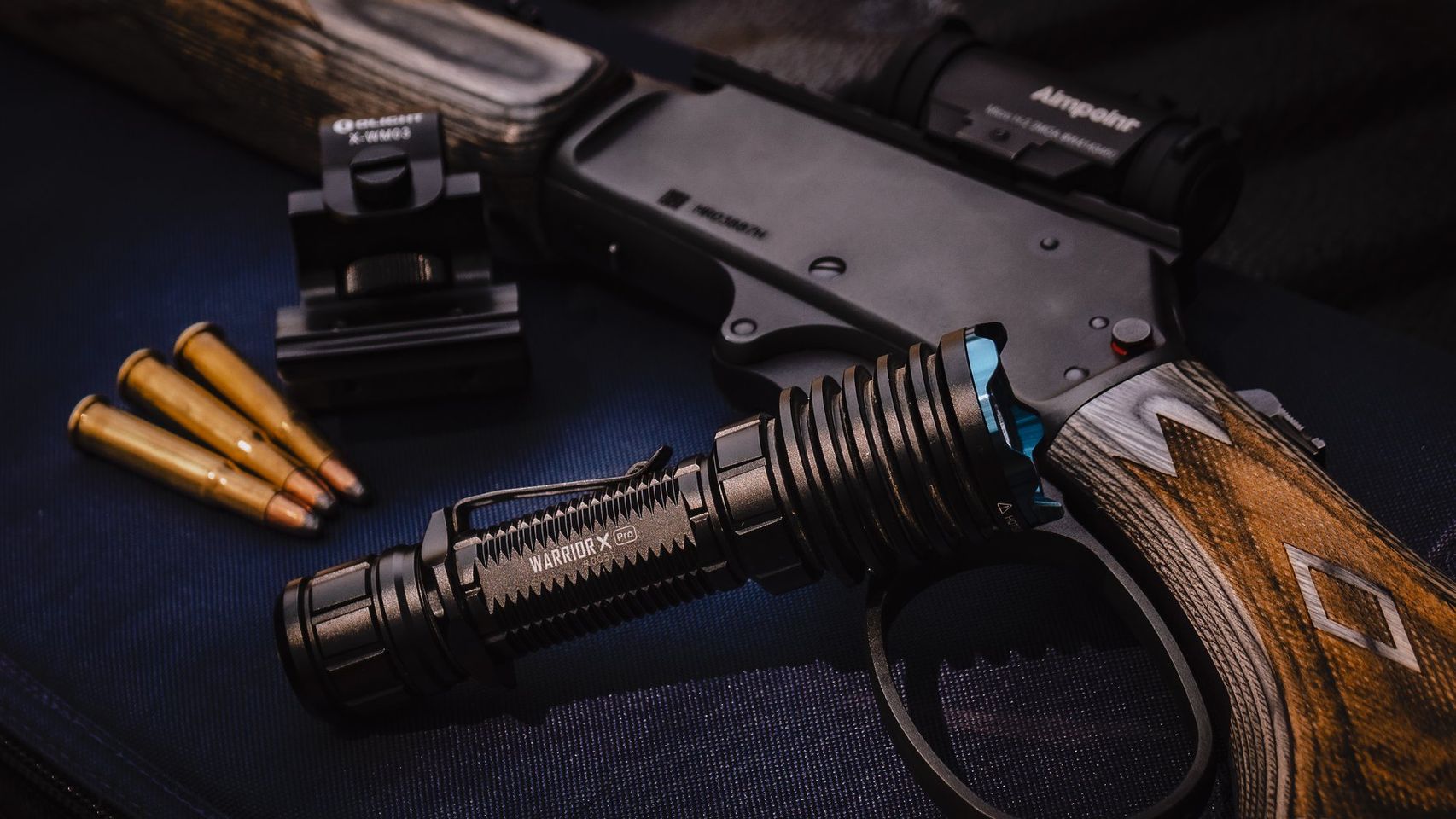Have you ever been stuck in the dark without a reliable source of light? You know how daunting this can be. Don’t let it happen to you again!
In this article, you will discover how to maintain and take proper care of your flashlight so that you’re always prepared for unexpected darkness. Whether your flashlight uses batteries or LEDs, learn the basics in this comprehensive guide.
Having a reliable source of light is important for anyone camping, fishing, or otherwise spending time outdoors. Modern flashlights provide a convenient and dependable source of illumination, but to keep your flashlight functioning optimally and avoid potentially dangerous malfunctions, it’s important to keep it well-maintained. This guide goes over some basic maintenance advice that everyone should consider and approach when dealing with flashlights.
Your flashlight is an invaluable tool when exploring the outdoors, but you must remember to always inspect and maintain it—otherwise could end up without illumination just when you need it most.
This guide covers some basic advice on how to properly maintain and care for your flashlight so you can rely on its performance in all conditions. We’ll discuss the importance of regularly inspecting the flashlight, storing it away from volatile substances and extreme temperatures, preventing water damage, cleaning the lens and accessories properly, replacing damaged or worn out components as necessary. Finally we’ll take a look at how to handle flooding incidents with your flashlight safely.

Brief overview of the importance of maintaining and caring for your flashlight
Maintaining and caring for your flashlight are essential parts of owning one. Regular inspection and cleaning is important to ensure it is functioning correctly. Additionally, having the right replacement parts on hand is important for longer-term upkeep.
Caring for your flashlight involves keeping it clean from dirt and debris, inspecting it regularly, testing its batteries, securely attaching it to your clothing or backpack if necessary, and replacing the batteries or bulbs as needed. Doing so will keep the light in the best condition possible for a much longer period of time than if you let it become dirty or damaged.
To clean with minimal disruption to the flashlight’s integrity, start by removing any debris from around the outside of the bulb before wiping down with a damp cloth. Inspect all parts of the light including switches and buttons as well as connections amongst each part while testing proper functioning. Get in the habit of regularly checking that all pieces are firmly attached and secure to ensure they won’t come apart during use. Also make sure that whatever method used to secure or attach your flashlight won’t come off when out on an adventure (e.g., Velcro straps).
Finally, check that any spare parts available such as batteries or bulbs match those in your flashlight so they can be quickly substituted should anything malfunction unexpectedly during regular use. Ensure these spare components are stored properly when not in use so they don’t corrode over time due to wetness or other environmental elements such as sunlight exposure which can be damaging to them over time.
Importance of having a working flashlight
Having access to a reliable, working flashlight is an essential component of any outdoor preparedness plan. A quality set of batteries (or rechargeable batteries) and a powerful flashlight should be in every household for emergencies. Whether it is a power outage, losing your keys at night, or needing to walk home from a public place after dark, having access to light can help ensure safety in many situations. Flashlights are an essential item for any homeowner, outdoorsman or scout and should be included in your emergency preparedness kit.
In addition to being able to see clearly in the dark, the benefits of owning and maintaining a functional flashlight include the following:
- The ability to read warning signs or labels when needed.
- Providing security when walking navigational courses in the dark.
- Useful for following maps in dim light environments.
- Being able properly assess potential hazards during night activities like camping trips or hikes.
- Revealing unexpected obstacles that may cause injury without adequate illumination.
- Giving access to distant objects with comparable assurance of safety.
- Focusing light on specific spots when needed (for example signal fires).
Understanding Your Flashlight
Before getting into the main details on how to properly maintain and care for your flashlight, it is important to equip yourself with an understanding of the different components of your particular flashlight. Different types of flashlights consist of either disposable or rechargeable batteries, a bulb or LED light, an interior power switch and body housing. It is essential that you understand such components in order for you to enhance its lifespan. Additionally, note that some parts may be vulnerable to breakage when handled without due diligence.
Disposable Batteries: Disposable batteries are widely used as they provide high power while at the same time are easy to purchase in stores. Make sure that you have the right kind of size and voltage depending on your flashlight model, as wrong batteries can cause damage to your device.
Rechargeable Batteries: Rechargeable batteries provide higher performance than disposable ones as they can be reused again after charging for a few hours using compatible charging accessories. Most rechargeables run on lithium-ion (Li-Ion) or Nickel-cadmium (NiCd) cells which offer longer battery life and higher performance when compared with other types like nickel-metal hydride (NiMH). Choose one type compatible with your flashlight and take good care not to let them overheat in order to prevent their early depletion in lifespan.
Light Bulb/LED Light Source: Different kinds of lights produce different colors, temperatures and beam patterns depending on their wattages/lumens and reflectors/optics used inside them. Choose one which produces strong enough brightness needed by you according to its purpose; generally brighter flashlights require more number of batteries while light emitting diodes (LEDs) use up exceedingly low energy compared with traditional bulbs reducing energy requirements substantially over extended usage periods . Keeping an eye out for available upgrades from manufacturers may help those looking towards boosting their products’ performance without breaking bank balance!
Interior Power Switch: Interior power switch controls all aspects of operation within a device including turning it ON or OFF etc., so any malfunctioning with it might render this device unsafe for use . It generally requires little maintenance but if observed misbehaving then utilizing expertise from professionals might save you from hazards caused due to mishandling of faulty devices.
Body Housing: Body housing provides durability/security for all internal components as most modern models consist of typically 2 pieces fit together into solid structures like screws & nuts etc.. Inspect it regularly for any wear & tear issues which could pose safety risks due to rusted weakness outside structure so try & look out for credible replacements if needed while maintaining necessary precautions related these vital components keeping them safe & reliable under normal conditions throughout life expectancy though occasional check ups may help keeping this part up & rolling like new!
Parts of a flashlight and their functions

Flashlights are an indispensable tool in home maintenance, DIY projects and emergencies. Keeping yours in top working condition requires understanding the various components of a flashlight, their functions and how to maintain them.
Lens/Cover – The lens is the protective outer covering that blocks out water and dirt, maximizing light output. The lens is also scratch-resistant and some are impact resistant.
Bulb – This component generates light via electric current power which passes through a filament. In modern technology, LED bulbs are used which increase the battery life exponentially; considering its ability to produce more light using less power than traditional halogen bulb flashlights.
Reflector – This component helps direct the lights generated by the bulb outward so it can produce the maximum amount of area coverage possible within its lumens rating (the amount of light produced).
Body/Tube – The body encases all of the other components keeping them safe from dirt, dust and moisture while allowing air flow around them to keep them cool as they operate. Bodies also come in varying lengths depending on your requirements for a given job or hobby; for example pocket size for everyday tuning up a car or bike or long length solely meant for cave exploration where you may need more range rather than portability., set etc.
Common issues that can occur with flashlights

When using a flashlight, it is important to always be aware of any common issues that may arise. Although these issues can vary depending on the type of flashlight you own, below are some of the most common issues that can occur with all types of flashlights, and what you can do to maintain and repair them.
-Dead Batteries: One of the most common flashlight problems is dead or dying batteries. You should always keep fresh batteries in your flashlight in case they need to be replaced while you are using it. Additionally, when working with lithium-ion batteries, it is important to store them at a temperature under 80°F (27°C).
-Dusty Lens: When operating your flashlight for extended periods in outdoorsy or dusty conditions, there is a possibility that dust particles can collect on the lens and cause barrelling or loss in brightness from the LED. A simple way to debarrel and clean your flashlights lens is by using a lint-free cloth and water.
-Switch Malfunction: This issue usually occurs when damage has been done directly to the switch itself due to regular use or dropping of your flashlight. Depending on how severe this damage is there are several repair kits available online which will allow you to open/disassemble and repair/replace the switch yourself at home if needed.
-Unresponsive Bulb : If you have noticed a decrease in brightness coming from your bulb but cannot determine what might be wrong – it could be that over time excessive heat has caused irreparable damage or corrosion inside of its components leading to unresponsiveness from the bulb itself (known as “thermal runaway”). In this situation, replacing your lightbulb altogether would be recommended as it would likely require replacement parts not easily available/accessible by consumers at home.
Proper Cleaning and Storage

It is important to take good care and properly maintain any flashlight to ensure that it functions efficiently. It is recommended to clean a flashlight at least every couple of months with a soft, dry cloth or small brush. This will help remove any dirt that may have contaminated the lens and obstruct the light generated by the bulb, reducing its brightness and efficiency.
In addition, if cleaning with a cloth or brush is not enough, use compressed air to blow out any debris in hard-to-reach crevices inside the flashlight’s housing.
When storing your flashlight in between uses, be sure to store it in a cool, dry location which allows for adequate airflow. Storing your flashlight too tightly can promote condensation due to trapped heat and moisture, which can damage both the internal components of your flashlight as well as diminish its light output efficiency.
Additionally, make sure the contacts on your batteries are clean and free from corrosion; check from time to time if you need to buff them out with an emery board or steel wool.
How to clean your flashlight
Assuming your flashlight is made of metal or rubber, you should start by cleaning it with a dry cloth and brushing off any dirt and debris that has accumulated on the outside. After giving it a quick wipe down, use distilled white vinegar and a clean, damp cloth to remove any grease or oils that have built up. Then rinse your flashlight off with warm water and make sure not to get moisture into any electrical components. You can use a hair dryer on a low heat setting to speed up the drying process if desired.
If you are dealing with some hard-to-get-off areas or stubborn stains, you can use rubbing alcohol for spot cleaning as needed. Once your flashlight has been cleaned, give it one more wipe down with an old cloth or towel to polish the exterior of your flashlight. Keep in mind: avoidance is key; don’t let buildup accumulate over time so that it takes more effort to get off later on!
Tips for storing your flashlight
When your flashlight isn’t in use, you should look for a safe, dry place to store it. Extremes of temperature, moisture and dirt can damage the exterior of the flashlight and cause its battery to malfunction. The best option is to store your flashlight in a cool, dry place away from dust, dirt and moisture.
Store any extra batteries outside of the flashlight. Rechargeable batteries should not be left in the flashlight and plugged into a source of power indefinitely; they will overcharge and become damaged.
Additionally, make sure that all parts are secure before storing – loose pieces such as O-rings or light lenses can easily be lost if you’re not careful.
Recommended storage conditions
It is important to store flashlights in the proper location and conditions to ensure they remain in their best working condition. Your flashlight should be stored in a cool, dry environment, not exposed directly to sunlight, and away from sources of extreme heat. If stored improperly, your flashlight’s lifespan may be significantly shortened due to increased wear and tear or corrosion caused by extreme temperatures or moisture.
It is also recommended that you keep your battery-powered flashlights out of direct sunlight when not in use and stored with the batteries removed from the light. Doing this will help prevent any unintentional discharge of battery power while in storage. To help extend your flashlight’s life, inspect it periodically for any signs of wear or damage so that you can determine if repair is needed. Inspecting your flashlight on a regular basis will also help you take necessary action if any part needs maintenance or replacement as soon as possible.
Conclusion
Taking the proper steps to maintain and care for your flashlight can ensure that it lasts as long as possible. Preventive maintenance and general upkeep will help reduce the chances of any problems arising in the future, and proper cleaning of lenses, filters, and other components is essential for optimal performance.
With regular use and a little bit of love and attention, your flashlight will serve you well for many years to come.
FAQs
What is the best way to clean flashlight?
The best way to clean a flashlight is to remove the batteries and use a clean, dry cloth to wipe down the exterior of the flashlight, taking care to avoid getting water or cleaning solutions inside the device.
How do you use a flashlight wisely and safely?
To use a flashlight wisely and safely, it is important to avoid shining it directly into people’s eyes, to only use it in appropriate environments, and to turn it off when it is not needed to conserve battery life.
How do you use a flashlight properly?
To use a flashlight properly, insert fresh batteries or charge the device, turn it on using the power button, aim the beam where needed, and turn it off when finished.
How often should I clean my flashlight?
It is recommended to clean your flashlight after each use, or at least once every few weeks, to ensure that it remains in good working condition.
Can water damage a flashlight?
Yes, water can damage a flashlight by corroding the internal components, short-circuiting the battery, or causing the bulb to malfunction.
How can a flashlight be improved?
Flashlights can be improved by incorporating brighter and longer-lasting LED bulbs, more efficient battery systems, and durable materials that can withstand wear and tear.
How do you clean an old flashlight?
To clean an old flashlight, gently wipe down the exterior with a clean, dry cloth, being careful not to scratch the surface or damage any components. If needed, use a small amount of rubbing alcohol on the cloth to remove stubborn stains.
What makes a flashlight shine?
A flashlight shines by converting electrical energy from the batteries into light energy through the use of a bulb or LED.
How long should a flashlight last?
The lifespan of a flashlight can vary depending on usage and quality, but a good-quality flashlight can last for many years with proper care and maintenance.
What is the lifespan of flashlight?
The lifespan of a flashlight can vary widely depending on usage, quality, and the type of batteries used, but a good-quality flashlight can last for many years with proper care and maintenance.
See More
- Best pencil flashlight 2023
- Best pocket flashlight 2023
- Best stun gun flashlight 2023
- Best tactical flashlight 2023
- Best uv flashlight 2023


